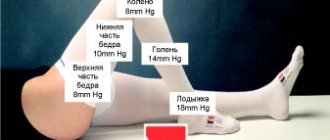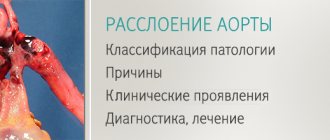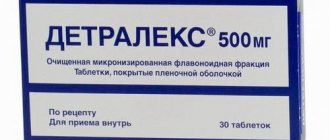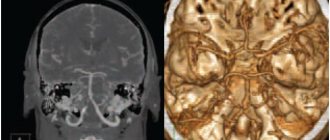5.2. Pharmacological drugs used in the treatment of chronic venous disease
The means of basic pharmacotherapy for chronic venous disease are phlebotropic drugs (synonyms: FLP, venoactive drugs, phleboprotectors, venotonics), which represent a heterogeneous group of biologically active substances obtained by processing plant raw materials or chemical synthesis, united by the ability to increase venous tone, as well as reduce the severity of venous -specific symptoms and syndromes.
The classification of the main phlebotropic drugs is presented in Table 5.
Table 5. Classification of main phlebotropic drugs
| Group | Substance | Sources of raw materials |
| γ-benzopyrones (flavonoids) | Diosmin | Japanese Sophora (Saphora japonica) |
| Micronized purified flavonoid fraction (MPFF) | Rutaceae (Rutaceae aurantiae) | |
| Rutin and hydroxyethylrutosides (HER) | Eucalyptus (Eucalyptus spp.), Buckwheat (Fagopyrum esculentum) | |
| Saponins | Horse chestnut seed extract, escin | Horse chestnut (Aesculus hippocastanum L) |
| Ruscus extract | Butcher's broom (Ruscus aculeatus) | |
| Other plant extracts | Proanthocyanidins (oligomers) | Grape seeds and red grape leaves |
| Ginkgo dicotyledonous extract + heptaminol + GER | Ginkgo dicotyledonous | |
| Synthetic drugs | Calcium dobesilate | Synthetic |
| Diosmin | Semi-synthetic |
5.3. Mechanism of action of phlebotropic drugs
Phlebotropic drugs increase the tone of peripheral veins and lymphatic vessels due to their effect on the norepinephrine-dependent mechanism, as well as due to some drug-specific effects (Table 6).
Table 6. Therapeutic effects and mechanisms of action of phlebotropic drugs
| Effect | Phlebotropic drug |
| Anti-edematous and capillary-protective | All phleboprotectors |
| Analgesic (venous pain) | MOFF, red grape leaf extract |
| Venotonic | All phleboprotectors Note: butcher's broom extract is a partial agonist of venous ɑ1-adrenergic receptors (neutralizes nitric oxide in the arterial section of the capillary bed) |
| Lymphotropic | MOFF, butcher's broom extract |
| Rheological | MOFF, troxerutin, rutin |
| Profibrinolytic | MOFF, troxerutin, diosmins |
| Anti-inflammatory | MOFF, Gingko dicotyledonous extract, diosmin |
| Inhibition of leukocyte-endothelial adhesion | MOFF |
| Venous valve protection | MOFF |
| Venous wall protection: | |
|
|
Candles
To treat hemorrhoids, doctors often prescribe medications in the form of suppositories. They are more convenient to use, unlike ointments, which are difficult to place inside the rectum.
But in pharmacies the choice of suppositories is small, since they are rather an addition to the complex therapy of hemorrhoids:
- Proctosedyl M - contains an antibiotic that provides a powerful bactericidal effect, benzocaine eliminates itching and pain, and the esculoside component reduces capillary fragility. Proctosedyl is used to eliminate anal fissures, proctitis, and internal hemorrhoids.
- Procto-Glivenol - relieves increased capillary permeability and inflammation of soft tissues, thanks to tribenoside. The substance lidocaine has an antiseptic effect, anesthetizes, and neutralizes infections.
Both drugs are well tolerated, do not accumulate in the body, are quickly eliminated, and do not have a negative effect on the gastrointestinal tract or cardiovascular system.
5.4. Clinical effectiveness of phlebotropic drugs
The main indication for the use of phlebotropic drugs are symptoms associated with CVD: heaviness in the legs, discomfort, itching, pain along the varicose veins, paresthesia, night cramps and other vein-specific complaints; chronic venous edema, as well as trophic skin disorders, including venous ulcers. Numerous clinical trials indicate that in the early stages of the disease (C0S-C2S) all phlebotropic drugs have a good therapeutic effect on subjective symptoms, but not external manifestations (telangiectasia, varicose reticular and saphenous veins) of CVD.
However, when conducting pharmacotherapy of early stages of chronic venous disease, preference should be given to phlebotropic drugs, whose effectiveness and safety have been proven in randomized controlled clinical trials.
Chronic venous edema (C3) is an absolute indication for the prescription of phlebotropic drugs.
According to the meta-analysis, the most pronounced anti-edematous effect is demonstrated by MOFF (Detralex), which is the first choice drug for chronic venous edema. Hydroxyethylrutosides (Venoruton) and butcher's broom extract (Cyclo 3 fort) also reduce chronic venous edema and can serve as second-line drugs. The effectiveness of non-micronized (native) diosmin against chronic venous edema is not significantly different from placebo. To evaluate the effectiveness of other phlebotropic drugs for chronic venous edema, it is necessary to conduct randomized clinical trials using standardized protocols. Venous trophic ulcers. Currently, the results of only one meta-analysis are known, including 5 randomized controlled trials, according to which MOFF in combination with standard compression therapy accelerates the healing of trophic ulcers with an area of up to 10 cm2 by an average of 5 weeks.
Perioperative period. It is advisable to use phlebotropic drugs to accelerate medical and social rehabilitation and prevent unwanted side effects during phlebosclerosing and surgical treatment of chronic venous disease. Currently, the positive effect of MOFF has been confirmed, significantly reducing the intensity of postoperative pain, swelling and severity of hemorrhages after endovascular and surgical treatment of CVD.
Summary data on the effectiveness of phlebotropic drugs in the treatment of different stages of CVD are presented in Table 7.
Table 7. Efficacy of phlebotropic drugs against various symptoms and syndromes associated with CVD
| Disease class | Individual entrepreneur | Duration of treatment | Level of evidence of effectiveness |
| C0,1,2 + vein-specific symptoms | All individual entrepreneurs | 2-3 months | A-C |
| C0-2 + venous pain |
| At least 3 months | A-B |
| C3 (chronic venous edema) |
| At least 3 months | A, B |
| S4-6 | MOFF | At least 6 months | A-C |
*currently available evidence base is insufficient
The principle of action of drugs
Timely and regular use of phlebotonics in the initial stages of the disease allows you to strengthen blood vessels, get rid of pain, normalize blood flow, and avoid surgical intervention. Medicines have a blood-thinning effect, which allows them to be used to prevent venous insufficiency.
Phlebotonics drugs with lymphotropic action are prescribed for:
- removal and prevention of inflammatory processes in large and small veins;
- avoiding complications during the postoperative and rehabilitation periods;
- improve blood circulation.
The products contain plant components, so they have virtually no harm to the body. Thanks to the extract from grape leaves and chestnut extract, they increase the elasticity of blood vessels, improve blood flow, and have a preventive effect.
5.5. Safety of oral phlebotropic drugs
Phlebotropic drugs are well tolerated by the vast majority of patients. Undesirable dyspeptic (abdominal pain, diarrhea, vomiting, etc.) and autonomic (insomnia, dizziness, etc.) are noted by no more than 5% of patients. Undesirable side reactions typical for various phlebotropic drugs are presented in Table 8.
Table 8. Possible undesirable side reactions when using various phlebotropic drugs
| A drug | Skin reactions | Dyspeptic reactions | Other unwanted side effects |
| Oxerutin and rutosides | Frequent, especially in combination with topical forms | Frequent | |
| Escin (horse chestnut extract) | + | Dizziness, headache, urticaria | |
| Ruscus extract | + | ||
| Grape seed and red leaf extract | + | Frequent | Dizziness, headache, urticaria, tachycardia |
| Ginkgo dicotyledonous extract + troxerutin + heptaminol | + | + | |
| Diosmin** | + | + | Dizziness, weakness, tachycardia, etc. |
| MOFF* | + | Rare autonomic reactions such as weakness and dizziness | |
| Calcium dobesilate** | + | + | Agranulocytosis |
* MOFF is safe for long-term (6 months or more) use, and the frequency of unwanted side reactions does not increase
** Synthetic drugs are more likely to cause dyspeptic reactions.
Means for increasing the lumen of arteries
{banner_banstat7}
The mechanism is based on the ability to biochemically dilate blood vessels, normalize blood flow and reduce the load on arteries and capillaries. The effect is always complex.
These medications are also called nitro group donors. Typical names that can be found on pharmacy shelves are Tivomax, Tivertin.
Method of administration: intravenous, drip. Not suitable for prolonged use.
The maximum possible continuous course is 14 days. Then take a break of 2 weeks and, if necessary, repeat the scheme. It is possible to use medications in children over 3 years of age, which is important.
Side effects are relatively rare. And if they do occur, they are easily tolerated and do not require a revision of the therapeutic course.
The same applies to contraindications. Among these, the manufacturer names an allergic reaction to medication components.
It should be added that the drugs are used with caution in case of a polyvalent (multiple) response to various medications.
The cost is low, so this type of angioprotective therapy is available to most people.
5.6. The use of phlebotropic drugs in pregnant women
In the second and third trimesters of pregnancy, MOFF, diosmin, hydroxyethylrutosides and a combination of Ginkgo dicotyledonous extract with heptaminol and troxerutin are allowed. At the same time, the lack of serious clinical studies on the use of phlebotropic drugs in pregnant women makes their use justified only in cases where the benefits of using phleboprotectors outweigh the potential negative reactions. It is not recommended to prescribe phlebotropic drugs during breastfeeding.
Metabolic drugs
{banner_banstat8}
Combined mechanism. They affect the condition of blood vessels on the one hand, on the other hand they have the ability to normalize metabolic processes in affected tissues, accelerate the utilization of glucose, increase the amount of energy produced, and prevent ischemic and hypoxic processes.
Among the names, the key place belongs to Actovegin.
The medicine is suitable for use in different categories of patients. There are minimal contraindications and virtually no side effects, although variations are possible.
It is quite expensive, but long courses are not required. The optimal regimen is parenteral (injection) administration in large doses in the first few days, reducing concentrations as you progress.
It is important to note. Metabolic angioprotective agents increase the nutrition of all tissues without exception, including abnormal ones.
Therefore, such drugs cannot be used if there are brain tumors. It doesn't matter whether they are malignant or benign. There are high risks of continued growth.
5.8. Regimen for taking and dosing phlebotropic drugs
Adequate doses of phlebotropic drugs recommended by manufacturers should be prescribed, and standard treatment regimens and durations should be followed. Exceeding standard daily doses does not always increase the clinical effect, but increases the frequency of unwanted side reactions that disrupt the initiated course of pharmacotherapy. However, a number of studies indicate that in certain clinical situations, increasing the dose of a phlebotropic drug can increase its therapeutic effectiveness. In this regard, in situations where the benefit outweighs the potential risk, the dose of the phlebotropic drug may be increased after documented justification and obtaining informed consent from the patient.
It is advisable to prescribe phlebotropic drugs in the form of monotherapy or fixed combinations*, since the simultaneous use of two or more drugs belonging to related chemical classes does not enhance the therapeutic effect, but increases the likelihood of developing undesirable side reactions.
* fixed combination is a multicomponent drug
Phlebotropic drugs are prescribed in courses, the duration of which is selected empirically, based on the dynamics of symptoms and syndromes, the duration of remission, and the occurrence of undesirable side reactions. For patients with the initial stages of chronic venous disease (C0S-C2S), the duration of the standard course ranges from 1.5 to 3 months (2.5-3 months on average). For chronic venous edema (C3), trophic skin disorders, and especially open ulcers (C4-6), phlebotropic drugs can be prescribed for 6 months or more.
It is advisable to start a course of phlebotropic drugs with the period of expected exacerbation of the disease or a possible violation of the compression regime. Thus, the use of compression therapy is difficult in the hot season, when working in conditions of high temperature and humidity, as well as when it is necessary to comply with a dress code. A negative background, often leading to an exacerbation of the course of chronic venous disease, is created by a long forced stay in a sitting or standing position (many hours of air flights, travel by bus or car, etc.), an increase in work (heavy lifting, etc.) or household (housework or on a personal plot, caring for bedridden patients, etc.) physical activity.
In severe forms of CVI, especially in obese patients who experience insurmountable difficulties wearing compression bandages or medical hosiery, as well as when compression therapy is not possible, phlebotropic drugs are prescribed for continuous use. MOFF has the highest safety profile for long-term (6-12 months) use.
Preparations for normalizing microcirculation
Angioprotectors of this group have the ability to dilate blood vessels, reduce the likelihood of oxidation of the walls of blood supplying structures, and make it possible to reduce their fragility.
In the system, this makes it possible to reduce the risks of emergency conditions several times.
It has been proven that patients taking drugs to improve microcirculation have good disease dynamics.
In total, two subgroups can be distinguished in this category.
Pentoxifylline and drug analogues
{banner_banstat5}
Pentoxifylline has pronounced pharmacological activity with a relatively low likelihood of side effects.
Suitable for long-term use in high dosages. The ideal regimen involves a 2-3 week course of intravenous drip infusion with a transition to the tablet form after.
The drug should not be taken if you have severe heart disease.
One of the main advantages, which sometimes even tips the scales when choosing a medication, is the low cost of Pentoxifylline.
Although there are more effective, safer analogues, including long-acting ones (Vazonit, which is drunk once a day).
Foreign analogues have proven high efficiency, it is more than that of the original medicine (Trental and others).
Prostaglandins
New generation of microcirculation stimulators. Pentoxifylline cannot compare with them in terms of duration and severity of the effect. Names: Vazaprostan, Ilomedin, Alprostan, etc.
However, there is one huge disadvantage behind this - while the efficiency is tens of times higher, you will have to spend a lot of money. The price starts from 5 thousand rubles, there are also more expensive options.
Not everyone can afford such treatment, especially since prostaglandins are not included in the special list, which is why they are not prescribed even under federal benefits.
5.9. Local dosage forms for the treatment of chronic venous disease
The therapeutic effect of local medications is largely due to the distracting effect due to the evaporation of volatile components (local hypothermia) and massage during application and rubbing of the drug. The seemingly rapid therapeutic effect of local drugs quickly wears off and requires their repeated use. It must be clearly understood that local dosage forms should be used in combination with compression therapy and systemic drugs.
Local dosage forms in the form of gels and sprays, including heparin, NSAIDs and phleboprotectors, are advisable to use for rapid relief of vein-specific symptoms (pain, feeling of heaviness and heat, local swelling, etc.). Their use is not recommended for asymptomatic forms of CVD.
The effectiveness of various ointments and gels is directly dependent on the concentration of the active substance. In this regard, when prescribing heparin-containing gels, preference should be given to drugs with a high concentration of the active substance of 500-1000 IU/gram.
Contraindications to the use of local dosage forms (with the exception of corticosteroids and dermatoprotectors) are damage to the skin (erosion, excoriation), dermatitis and eczema, as well as open trophic ulcers.
Contraindications
Since the list of drugs is wide, it is necessary to proceed from specific recommendations for refusal of use, depending on the group of medications.
Preparations to improve microcirculation:
- Severe heart disease.
- Recent hemorrhagic stroke.
- Tendency to bleed.
- Age over 60-65 years.
Vasodilators, metabolic drugs, phlebotonics:
- Intolerance to the components of the drug.
- Polyvalent allergic reaction (with caution, not a strict contraindication).
Anticoagulants are not used if there is a tendency to develop bleeding, because they can provoke dangerous hemorrhagic complications.
A general contraindication for all medications without exception, and not only those described, is an allergic reaction to the drug. But it can be discovered experimentally.
It is recommended to start with the minimum dosage unless there is reason to the contrary. Otherwise, it is better to carry out therapy in a hospital setting. This will allow you to react in time and revise the course if necessary.
5.10. Antiplatelet and other drugs used in the treatment of CVD
Antiplatelet and hemorheologically active drugs (acetylsalicylic acid drugs 50-150 mg/day, pentoxifylline 1200-2400 mg/day) are advisable to prescribe in the presence of appropriate concomitant pathology (diabetes mellitus, obliterating atherosclerosis, etc.).
For chronic venous edema and trophic skin disorders (C3,4,5 according to CEAP), the use of polyenzyme drugs (wobenzym, phlogenzyme) in standard therapeutic dosages may be useful. Due to the fact that polyenzyme drugs in some cases can contribute to the destruction of biological membranes and exacerbation of the local infectious process, it is advisable to combine them with rational antibacterial therapy.
A comment
. For venous trophic ulcers, sulodexide can be used as an additional therapy. The role of multienzyme drugs in the treatment of chronic venous disease requires further study. The use of prostaglandins for the treatment of chronic venous disease is possible in the presence of trophic skin disorders and ulcers of mixed arteriovenous origin.
Types of phlebotonics
Phlebotropic drugs are used only in the complex treatment of edema caused by varicose veins and other diseases.
The forms of their release are different:
- tablets, capsules, dragees;
- ointments are absorbed slowly due to the fatty base in which the medicinal substance is not completely dissolved. To achieve maximum effect, apply a thick layer under the bandage, preferably at night;
- gels are made on a water-soluble basis, therefore they have a lighter shape. The light absorbent form allows you to apply them during the day without fear of staining your clothes;
- creams are emulsions in the form of fatty particles dissolved in water. Active in case of insufficiency of superficial veins, they can remain under the upper layers of the skin for a long time.
Only a medical specialist can select a therapeutic complex that includes products for external and internal use.
5.11. Monitoring the effectiveness of treatment
One should strive to objectify the assessment of the effectiveness of the treatment. For complaints and subjective symptoms, it is useful to use visual analogue scales and disease-specific questionnaires (CIVIQ, etc.). When monitoring the dynamics of chronic venous edema, it is advisable to use a measuring tape or more precise instruments (leg-O-meter, volumetric meter, etc.).
In case of trophic skin disorders, the effectiveness of the treatment is indicated by a decrease in inflammatory phenomena and the area of indurative cellulite, as well as signs of epithelization of a venous ulcer.
If there is no effect from the therapy, it is necessary to carry out additional differential diagnostics.








